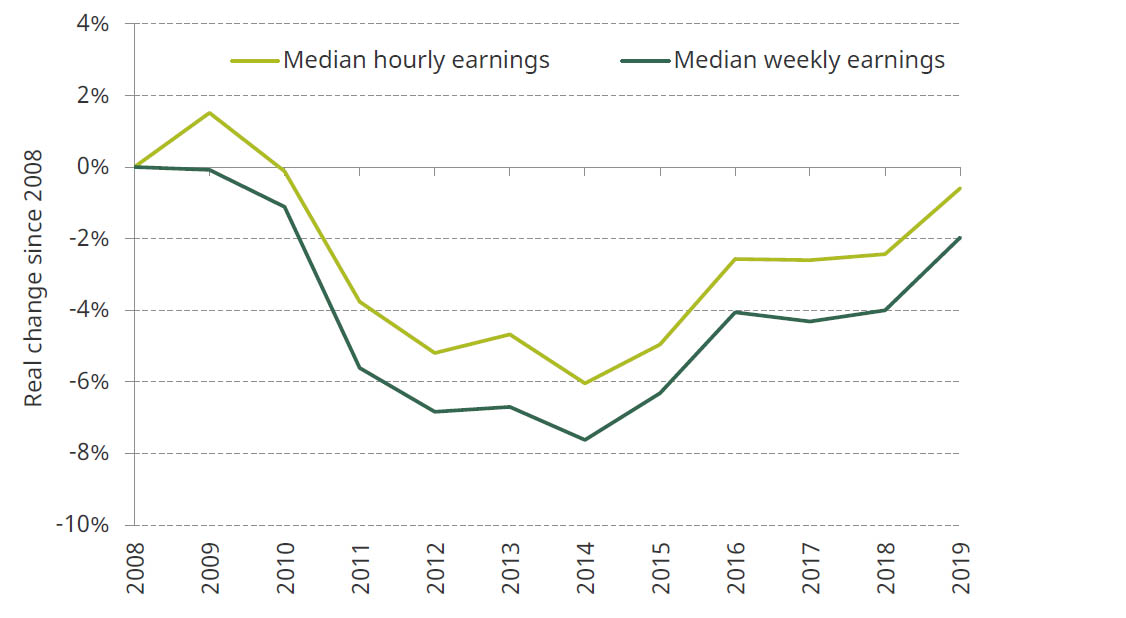
Earnings, employment and productivity
Earnings, employment and productivity
The employment rate is at a record high of 76%, but the earnings of those in work are still yet to recover to their pre-2008 levels after adjusting for inflation – marking an unprecedented ‘lost decade’ of earnings growth. This is closely linked to an almost complete lack of productivity growth over that period. Productivity is just 3% higher than it was in 2008, or 19% lower than it would have been had the normal pre-crisis rate of productivity growth continued.
These trends have accelerated a large shift in the nature of poverty and low income in the UK, away from the unemployed and elderly and towards the working poor. The majority of all people below the official poverty line are now either in paid work themselves or sharing a household with someone who is. This is the backdrop to many of the most pressing domestic policy debates, and high-profile policies including the minimum wage, which looks set once again to be the subject of an election battle.
Changes to real median earnings, weekly and hourly, since 2008

Source: Authors’ calculations using ONS ASHE Time Series Estimates, Table 1, 2019 and ONS series L522 (CPIH index All Items). Earnings measures in April of each year.
Useful resources
Election 2019 analysis
Reducing in-work poverty: the role of minimum wages and benefits
Relative in-work poverty has been steadily rising since 1994–95, meaning that the incomes of poorer working households have not been keeping up with those of middle-income households.
The future path of minimum wages
Minimum wages can play an important role in raising living standards, and have become an important part of a government’s toolkit in addressing low pay. In the forthcoming election, both main parties have commited to increasing the level of the minimum wage. This briefing note sets out some background behind these proposals.
Public sector pay and employment: where are we now?
Employing public sector workers to help deliver public services is a major part of what government does. The number of workers employed by the government and how much they are paid matters not just for those individuals and their families, but also for the public finances and for the public services those employees help provide.
Background analysis
Briefing note
Employees’ earnings since the Great Recession: the latest picture
Public sector pay and employment: where are we now?
The future path of minimum wages
Social media
Labour’s policy would mean nearly 30% of private sector employees’ wages would be set directly from Whitehall, while Conservative policy would set 20% of private sector wages. pic.twitter.com/ncRLVCzdTX
— IFS (@TheIFS) November 15, 2019
— IFS (@TheIFS) November 14, 2019
Young people have been struggling to accumulate wealth at the rate that their predecessors did. The biggest contributory factor has been the collapse in homeownership.
Read more: https://t.co/R6BZPTRYzt pic.twitter.com/d269EZopvy
It's #EqualPayDay, and the Liberal Democrats and Labour have both announced measures to tackle the gender pay gap.
— IFS (@TheIFS) November 14, 2019
By the time their first child is aged 20, mothers earn about 30% less per hour, on average, than fathers.
Read more: https://t.co/V5OQcYrJ1Z pic.twitter.com/N7ds7zwCIM



